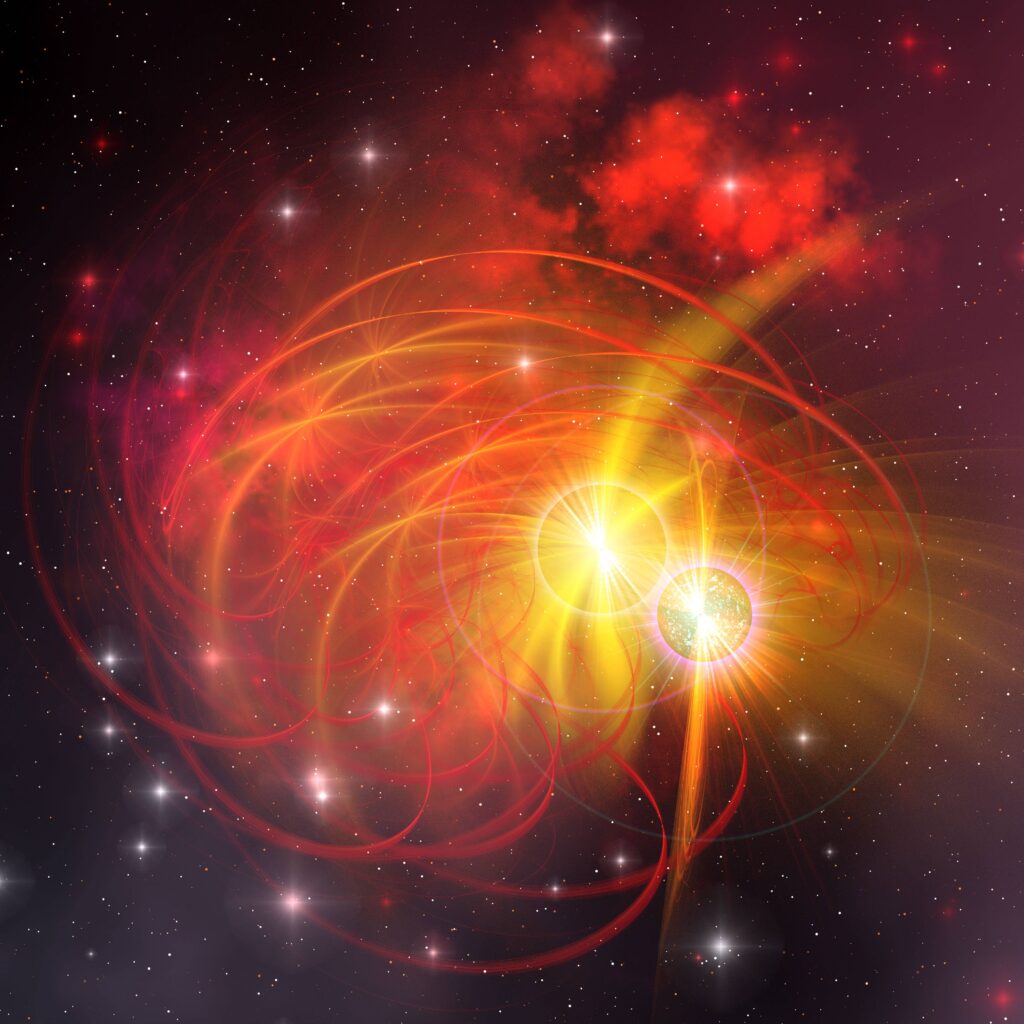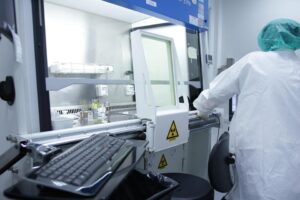
In a remarkable feat of citizen science, volunteers have captured the explosive moment of a binary star system’s transformation using telescopes stationed on opposite sides of the globe. This discovery was made as part of the Kilonova Seekers project, which enlists the public to play a cosmic game of “spot the difference” with images from two telescopes, one located in La Palma, Canary Islands, and the other at Australia’s Siding Spring Observatory.
The volunteers identified a cataclysmic variable star, dubbed GOTO0650, which exhibited “extreme brightening” when compared to images taken just two days prior. This finding has been documented in the Astronomy and Astrophysics journal, marking a significant contribution to the field of astrophysics.
Understanding Cataclysmic Variable Stars
A cataclysmic variable star is a binary system comprising a white dwarf and a secondary star. The gravitational pull of the white dwarf distorts the secondary star, leading to dramatic changes in brightness. This phenomenon is what the citizen scientists were able to observe, highlighting the importance of public involvement in scientific research.
The Kilonova Seekers project, which involves over 3,500 participants worldwide, relies on the keen eyes of volunteers to sift through vast datasets for signs of cosmic events such as neutron star and black hole collisions. This collaborative effort has proven to be a powerful tool in the field of astrophysics.
Expert Insights and Project Impact
Professor Laura Nuttall from the University of Portsmouth expressed her pride in the project’s achievements, stating, “We’re engaging with people in just about every time zone, and thanks to their enthusiasm for the project, they are making discoveries and contributing to furthering our understanding of astrophysics.”
Dr. Lisa Kelsey from the University of Cambridge emphasized the significance of citizen science, noting, “With over 2.8 million classifications so far, the discovery of GOTO0650 is really the pinnacle of two years of consistent hard work from our volunteers.”
“Without the Kilonova Seekers volunteers flagging this object, rapid follow-up would not have been possible, and this object may have been missed entirely,” Dr. Kelsey added.
The Human Element: Personal Stories and Engagement
Dr. Tom Killestein, co-lead of Kilonova Seekers at the University of Warwick, highlighted the unique nature of the project, stating, “Kilonova Seekers is a unique opportunity for members of the public to take part in true real-time astrophysics.” The discovery was made within just three and a half hours of the image being captured by the GOTO telescopes.
For many volunteers, the project holds personal significance. Cledison Marcos da Silva, a participant, shared, “This discovery was very important to me, as I was going through a serious health problem and the citizen science we do at Kilonova Seekers was distracting me from my situation.”
“This discovery shows the importance of citizen science, both scientifically and personally. Even from your bed, or on the street with your cell phone, there is the possibility of making a very important discovery,” da Silva remarked.
Another volunteer, Mayahuel Torres-Guerrero, expressed excitement over the timing of the discovery, “It was very exciting when GOTO0650 produced an echo outburst on Christmas Day and New Year’s Day. It was a great journey for someone who has studied social sciences like me.”
Looking Ahead: The Future of Citizen Science
The success of the Kilonova Seekers project underscores the potential of citizen science to contribute to major scientific discoveries. As technology continues to advance, the role of the public in scientific research may expand, offering new opportunities for engagement and discovery.
With the continued enthusiasm and dedication of volunteers, projects like Kilonova Seekers not only enhance our understanding of the universe but also foster a sense of global community and shared purpose in the pursuit of knowledge.







